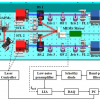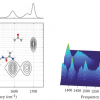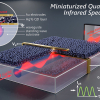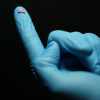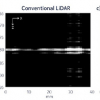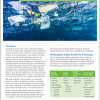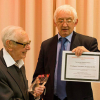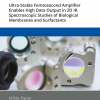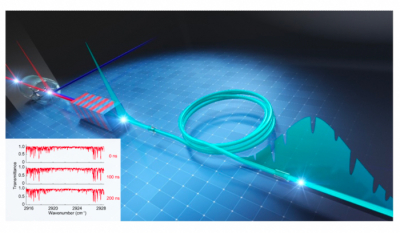
Infrared spectroscopy is usually only applied for static samples because spectral data acquisition is a slow process. Detecting fast-changing phenomena requires multiple quick measurements. Thanks to Prof. Ideguchi and his team at the University of Tokyo, it is now possible to obtain high-speed and high-resolution spectral data. The team discovered upconversion time-stretch infrared spectroscopy (UC-TSIR) which can measure infrared spectra with 1000 spectral elements at a rate of 10 million spectra per second.
“With recent improvements in the capability of analysing spectra using machine learning and other techniques, it is essential for infrared spectroscopy methods to acquire a large amount of molecular vibration information rapidly. We wanted to develop the infrared spectroscopy method to achieve that”, said Prof. Ideguchi, explaining the motivation of the research team.
Conventional time-stretch infrared spectroscopy data has fewer measurable spectral elements (~30) because the instruments work in the infrared region, where optical technology is currently limited. “UC-TSIR breaks the limit by converting infrared pulses containing molecular vibration information into near infrared pulses with wavelength conversion techniques (upconversion) and temporally stretching and detecting the pulses in the near infrared region”, said Dr Hashimoto. Compared to conventional methods, UC-TSIR provides over 30-fold more spectral elements and 400 times better spectral resolution. The UC-TSIR can trace high-speed phenomena such as the combustion of gaseous molecules and irreversible chemical reactions of biomolecules at a high temporal resolution.
In theory, the concept sounds simple and easy to implement; but it was far from that. “We carefully selected optical elements and adjusted the parameters through trial and error. Even after building the setup, we dealt with various spectral distortions caused by unwanted non-linear optical effects and insufficient time stretching. We were overjoyed when we finally saw clear infrared absorption spectra after dealing with those issues”, said Dr Hashimoto. “Nanosecond- or microsecond-scale ultra-fast continuous infrared spectral measurements by UC-TSIR can solve problems unresolved by conventional spectroscopy methods.”










